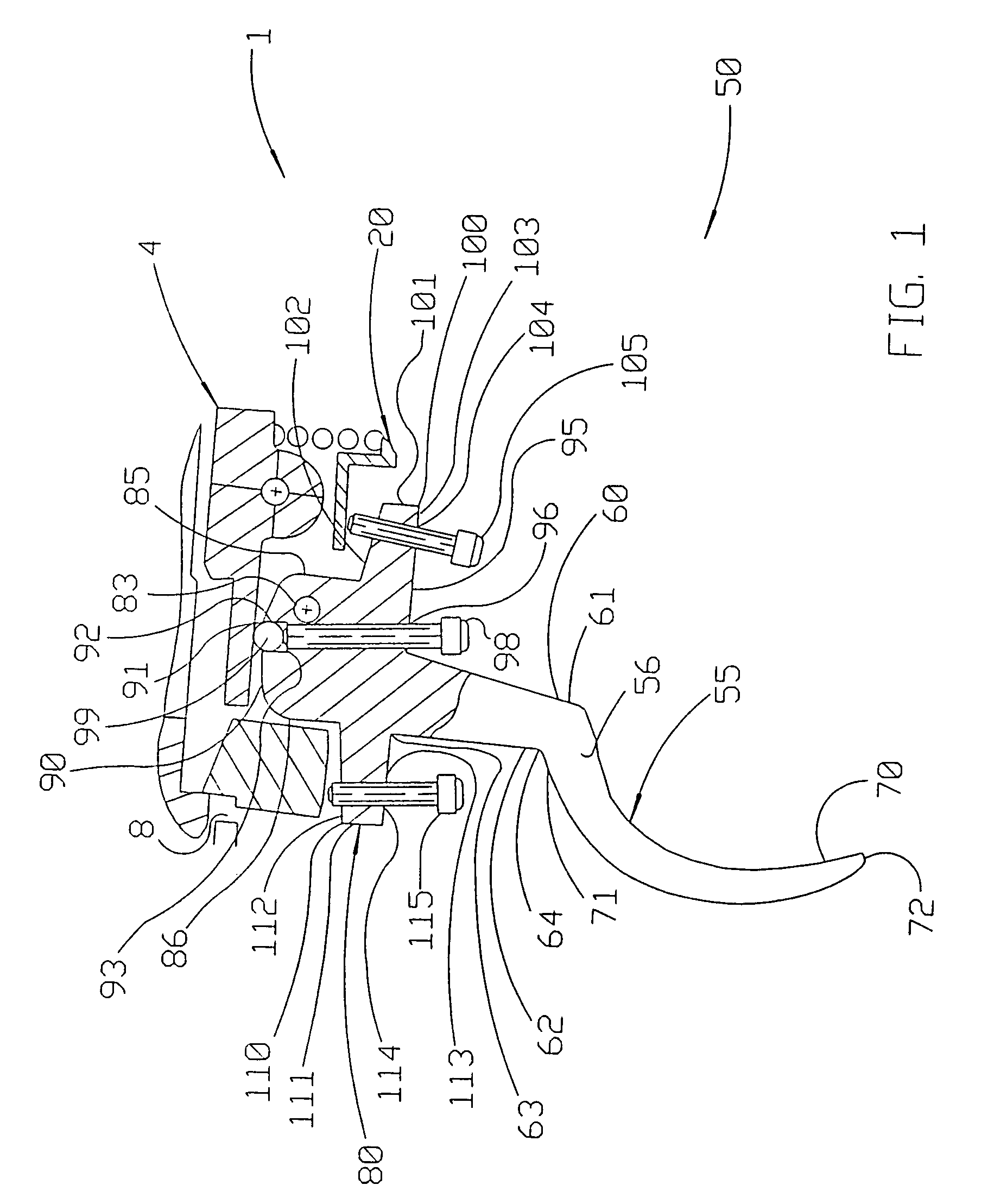Gun trigger
a trigger and trigger technology, applied in the field of gun triggers, can solve the problems of reducing the accuracy of the trigger position, reducing the accuracy of the trigger, and reducing the possibility of this type of problem, so as to achieve less exacting tolerance, reduce the effect of friction and less hea
- Summary
- Abstract
- Description
- Claims
- Application Information
AI Technical Summary
Benefits of technology
Problems solved by technology
Method used
Image
Examples
Embodiment Construction
[0041]While the invention will be described in connection with several preferred embodiments, it will be understood that it is not intended to limit the invention to those embodiments. On the contrary, it is intended to cover all alternatives, modifications and equivalents as may be included within the spirit and scope of the invention as defined by the appended claims.
[0042]Referring first to FIGS. 1–4, reference numeral 50 indicates an embodiment of the anti-friction trigger of the present invention. The trigger 50 is shown and described in connection with a rifle 1. However, it is understood that the present invention can be used with other types of bolt-action guns without departing from the broad aspects of the invention. The rifle 1 has a longitudinal axis 2. Rifle 1 also has a barrel 3 with an inside diameter sufficient to accommodate a bullet. The barrel 3 has a free end from which a bullet projects and an opposite end. A receiver 4 is longitudinally aligned with the barrel ...
PUM
 Login to View More
Login to View More Abstract
Description
Claims
Application Information
 Login to View More
Login to View More - R&D
- Intellectual Property
- Life Sciences
- Materials
- Tech Scout
- Unparalleled Data Quality
- Higher Quality Content
- 60% Fewer Hallucinations
Browse by: Latest US Patents, China's latest patents, Technical Efficacy Thesaurus, Application Domain, Technology Topic, Popular Technical Reports.
© 2025 PatSnap. All rights reserved.Legal|Privacy policy|Modern Slavery Act Transparency Statement|Sitemap|About US| Contact US: help@patsnap.com



